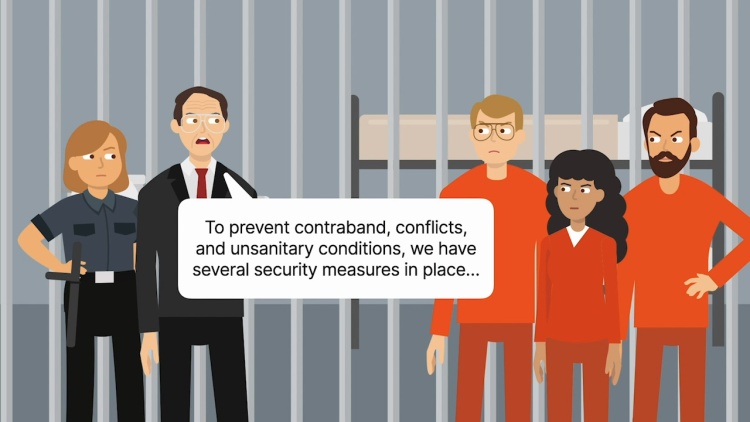Bell v. Wolfish
United States Supreme Court
441 U.S. 520 (1979)
- Written by Salina Kennedy, JD
Facts
The Metropolitan Correctional Center (the center) was a jail built in 1975 with the intention of housing primarily pretrial detainees. The center had 389 rooms, most of which were designed to house only one inmate, and a total planned capacity of 449 inmates. Soon after the center was built, however, the number of pretrial detainees rose significantly, and overcrowding became a problem. Double bunks were installed in the single-occupancy rooms and new arrivals were housed on cots in common areas until bunk space became available. The center also subjected all inmates, both pretrial detainees and those who had been convicted and sentenced, to restrictions on receipt of packages, body cavity searches, and a requirement that inmates stay outside their rooms while center officials conducted inspections. Louis Wolfish (plaintiff), on behalf of all inmates at the center, brought a federal class-action lawsuit challenging many of the center’s practices. The district court enjoined the center from engaging in twenty of the practices complained of by the inmates. The court of appeals largely affirmed the district court’s ruling, holding that pretrial detainees may be subject only to those conditions necessary to ensure their appearance at trial and that are justified by compelling necessities of jail administration. The United States Supreme Court granted certiorari.
Rule of Law
Issue
Holding and Reasoning (Rehnquist, J.)
What to do next…
Here's why 899,000 law students have relied on our case briefs:
- Written by law professors and practitioners, not other law students. 47,000 briefs, keyed to 994 casebooks. Top-notch customer support.
- The right amount of information, includes the facts, issues, rule of law, holding and reasoning, and any concurrences and dissents.
- Access in your classes, works on your mobile and tablet. Massive library of related video lessons and high quality multiple-choice questions.
- Easy to use, uniform format for every case brief. Written in plain English, not in legalese. Our briefs summarize and simplify; they don’t just repeat the court’s language.





